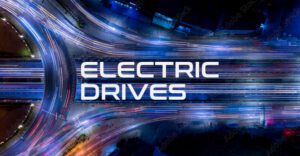Nissan’s Blue Switch project unlocks the energy stored in car batteries to help people hit by earthquakes, typhoons and other emergencies. In the wake of Typhoon Hagibis the volunteer centre in Nagano Prefecture in the heart of Japan was powered by a Nissan LEAF. A small white electric car powered photocopy machines, power tools and helped with cooking food and brewing coffee.
The electricity pulled from the car’s battery was shared across the centre through dusty cables. It also helped to copy addresses of those affected, light rooms and produce maps.
Ryosho Hara, said: “It can charge tools, like an impact driver or a circular saw, which we use to remove walls or floors damaged by the flood. Without electricity we can’t do anything, so it’s very helpful.”
The idea of using Nissan’s electric vehicles during disasters was born during the 2011 Japanese earthquake and tsunami. This event rocked a nation that’s used to frequent typhoons and endured one-tenth of the world’s earthquakes in the past 10 years.
After nearly five million homes lost power in the 2011 disaster, Nissan provided a small fleet of first-generation LEAFs to help out. The company also began to explore how electric cars could be used to share their energy.
In May 2018 the Blue Switch project was launched. Its mission was to demonstrate how electric cars can be used as power sources for purposes beyond mobility. In a typical year, powerful storms will disrupt the lives of millions, knocking out power to entire cities. This is what happened during last year’s Typhoon Faxai.

Being prepared means striking agreements with local governments and companies. Just last week Nissan reached a major milestone with 100 agreements signed. Of these, 75 relate to how Nissan’s electric vehicles can get straight to work the moment a disaster strikes.
During those critical first hours and days, the electric vehicles can move around disaster areas and deliver power where it’s needed most. With no exhaust fumes and completely silent, a LEAF can be parked inside a building. It can recharge where the power supply has been restored and then drive on to another hard-hit region
After a disaster or in an emergency, electricity is usually restored faster than fuel supply chains, which can take months to stabilise. That makes electricity superior to traditional diesel generators, which are noisy and polluting. Electric cars also provide mobility, helping get people to where they need to be.
A LEAF e+ with a fully charged 62-kilowatt hour battery can provide enough electricity to power an average Japanese home for up to four days, charge 6,200 mobile phones. It can keep the lights and fridges on at a local convenience shop, allowing people to buy food or nappies, or keep a nursery school room cool during nap time.
It’s impressive to see this technology being used now and helping on so many levels in such horrendous conditions during tough times. As a consequence, the technology is gaining recognition with the Blue Switch being honoured at the 2020 Japan Resilience Awards, where Nissan was the only carmaker on the list of winners. The programme was cited for showing the potential electric cars offer during emergencies, along with their role in energy management and the battle against climate change.
Nissan’s wider plan is to create a new electric vehicle ecosystem where cars store and share power with homes, businesses and the wider grid, not only during emergencies but every day. Using adapters like those at the Nagano volunteer centre, electric vehicles can top up their batteries when demand is low, store that energy and distribute it during peak times.
Already, the power in the batteries of Nissan’s electric vehicles out on the roads have the potential to power half a million Japanese households for a full day. Blue Switch makes it possible to see how static and vulnerable electricity grids can be turned into dynamic, flexible and highly distributed grids.

The zero-emission Nissan Pavillion in Yokohama showed that drivers can pay for parking by discharging power from their electric cars. In Holland, 148 LEAF batteries, many repurposed, help power a sports stadium. The road ahead is wide open for electric cars.



